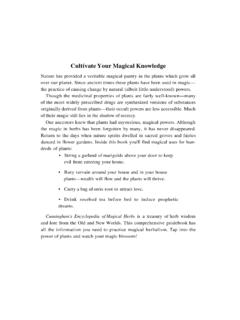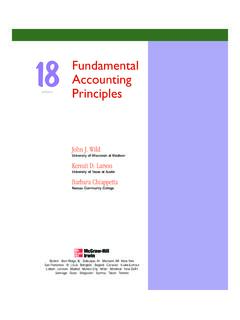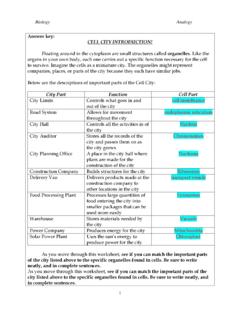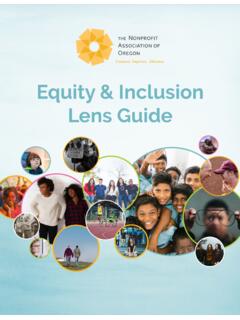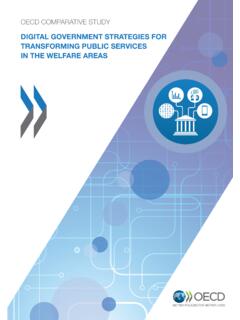Transcription of acclaim for Toni Morrison - Webs
1 acclaim for Toni Morrison [Toni Morrison ] may be the last classic American writer, squarely in the tradition of Poe, Melville, Twain and Faulkner.. Newsweek In the first ranks of our living novelists.. St. Louis Post-Dispatch Toni Morrison is not just an important contemporary novelist but a major figure in our national literature.. The New York Review of Books She is the best writer in America.. John Leonard, National Public Radio [Toni Morrison ] has moved from strength to strength until she has reached the distinction of being beyond comparison.. Entertainment Weekly Morrison is one of the most exciting living American writers.. The Kansas city Star The Bluest Eye Toni Morrison has made herself into the D. H. Lawrence of the black psyche, transforming individuals into forces, idio- syncrasy into inevitability. New York Morrison is perhaps the finest novelist of our time. Vogue Toni Morrison is one of the finest writers in America today.
2 Louisville Courier-Journal Toni Morrison The Bluest Eye Toni Morrison is the Robert F. Goheen Professor of Humani- ties, Emeritus at Princeton University. She has received the National Book Critics Circle Award and the Pulitzer Prize. In 1993 she was awarded the Nobel Prize in Literature. She lives in Rockland County, New York, and Princeton, New Jersey. also by toni Morrison fiction Love Paradise Jazz Beloved Tar Baby Song of Solomon Sula nonfiction The Dancing Mind Playing in the Dark: Whiteness and the Literary Imagination L THE. BLUEST. EYE L. a novel Toni Morrison v i n ta g e i n t e r nat i o na l Vintage Books A Division of Random House, Inc. New York F I R S T V I N TA G E I N T E R N AT I O N A L E D I T I O N , M AY 2 0 0 7. Copyright 1970, copyright renewed 1998 by Toni Morrison Foreword 1993, 2007 by Toni Morrison All rights reserved. Published in the United States by Vintage Books, a division of Random House, Inc.
3 , New York, and in Canada by Random House of Canada Limited, Toronto. Originally published in hardcover in the United States by Holt, Rinehart and Winston, Inc, in 1970, and subsequently published in slightly different form in hardcover by Alfred A. Knopf, a division of Random House, Inc., in 1993. Vintage is a registered trademark and Vintage International and colophon are trademarks of Random House, Inc. Portions of the foreword were previously published as the afterword to the 1993 Knopf edition. The Library of Congress has cataloged the Knopf edition as follows: Morrison , Toni. The bluest eye / by Toni Morrison . 1st ed. p. cm. 1. Afro-Americans Ohio Fiction. 2. Girls Ohio Fiction. I. Title 1993. dc20. 93-43124. eISBN: 978- 0-307-38658-8. w w w. v i n t a g e b o o k s . c o m To the two who gave me life and the one who made me free Foreword There can't be anyone, I am sure, who doesn't know what it feels like to be disliked, even rejected, momentarily or for sus- tained periods of time.
4 Perhaps the feeling is merely indiffer- ence, mild annoyance, but it may also be hurt. It may even be that some of us know what it is like to be actually hated . hated for things we have no control over and cannot change. When this happens, it is some consolation to know that the dislike or hatred is unjustified that you don't deserve it. And if you have the emotional strength and/or support from family and friends, the damage is reduced or erased. We think of it as the stress (minor or disabling) that is part of life as a human. When I began writing The Bluest Eye, I was interested in something else. Not resistance to the contempt of oth- ers, ways to deflect it, but the far more tragic and disabling consequences of accepting rejection as legitimate, as self- evident. I knew that some victims of powerful self-loathing turn out to be dangerous, violent, reproducing the enemy who has humiliated them over and over. Others surrender Foreword their identity; melt into a structure that delivers the strong persona they lack.
5 Most others, however, grow beyond it. But there are some who collapse, silently, anonymously, with no voice to express or acknowledge it. They are invisible. The death of self-esteem can occur quickly, easily in children, before their ego has legs, so to speak. Couple the vulnera- bility of youth with indifferent parents, dismissive adults, and a world, which, in its language, laws, and images, re-enforces despair, and the journey to destruction is sealed. The project, then, for this, my first book, was to enter the life of the one least likely to withstand such damaging forces because of youth, gender, and race. Begun as a bleak narra- tive of psychological murder, the main character could not stand alone since her passivity made her a narrative void. So I invented friends, classmates, who understood, even sympa- thized, with her plight, but had the benefit of supportive par- ents and a feistiness all their own. Yet they were helpless as well.
6 They could not save their friend from the world. She broke. The origin of the novel lay in a conversation I had with a childhood friend. We had just started elementary school. She said she wanted blue eyes. I looked around to picture her with them and was violently repelled by what I imagined she would look like if she had her wish. The sorrow in her voice seemed to call for sympathy, and I faked it for her, but, astonished by the desecration she proposed, I got mad at her instead. Until that moment I had seen the pretty, the lovely, the nice, the ugly, and although I had certainly used the word beautiful, I had never experienced its shock the force of which was equaled by the knowledge that no one recognized it, not even, or especially, the one who possessed it. xi It must have been more than the face I was examining: the silence of the street in the early afternoon, the light, the atmo-sphere of confession. In any case it was the first time I.
7 Knew beautiful. Had imagined it for myself. Beauty was not simply something to behold; it was something one could do. The Bluest Eye was my effort to say something about that; to say something about why she had not, or possibly ever would have, the experience of what she possessed and also why she prayed for so radical an alteration. Implicit in her desire was racial self-loathing. And twenty years later, I. was still wondering about how one learns that. Who told her? Who made her feel that it was better to be a freak than what she was? Who had looked at her and found her so wanting, so small a weight on the beauty scale? The novel pecks away at the gaze that condemned her. The reclamation of racial beauty in the sixties stirred these thoughts, made me think about the necessity for the claim. Why, although reviled by others, could this beauty not be taken for granted within the community? Why did it need wide public articulation to exist?
8 These are not clever questions. But in 1962 when I began this story, and in 1965. when it began to be a book, the answers were not as obvious to me as they quickly became and are now. The assertion of racial beauty was not a reaction to the self-mocking, humor- ous critique of cultural/racial foibles common in all groups, but against the damaging internalization of assumptions of immutable inferiority originating in an outside gaze. I. focused, therefore, on how something as grotesque as the demonization of an entire race could take root inside the most delicate member of society: a child; the most vulnera- ble member: a female. In trying to dramatize the devastation that even casual racial contempt can cause, I chose a unique Foreword situation, not a representative one. The extremity of Pecola's case stemmed largely from a crippled and crippling family . unlike the average black family and unlike the narrator's. But singular as Pecola's life was, I believed some aspects of her woundability were lodged in all young girls.
9 In exploring the social and domestic aggression that could cause a child to literally fall apart, I mounted a series of rejections, some routine, some exceptional, some monstrous, all the while trying hard to avoid complicity in the demonization process Pecola was subjected to. That is, I did not want to dehuman- ize the characters who trashed Pecola and contributed to her collapse. One problem was centering the weight of the novel's inquiry on so delicate and vulnerable a character could smash her and lead readers into the comfort of pitying her rather than into an interrogation of themselves for the smashing. My solution break the narrative into parts that had to be reassembled by the reader seemed to me a good idea, the execution of which does not satisfy me now. Besides, it didn't work: many readers remain touched but not moved. The other problem, of course, was language. Holding the despising glance while sabotaging it was difficult.
10 The novel tried to hit the raw nerve of racial self-contempt, expose it, then soothe it not with narcotics but with language that replicated the agency I discovered in my first experience of beauty. Because that moment was so racially infused (my revulsion at what my school friend wanted: very blue eyes in a very black skin; the harm she was doing to my concept of the beautiful), the struggle was for writing that was indis- putably black. I don't yet know quite what that is, but nei- ther that nor the attempts to disqualify an effort to find out keeps me from trying to pursue it. xiii My choices of language (speakerly, aural, colloquial), my reliance for full comprehension on codes embedded in black culture, my effort to effect immediate coconspiracy and inti- macy (without any distancing, explanatory fabric), as well as my attempt to shape a silence while breaking it are attempts to transfigure the complexity and wealth of Black American culture into a language worthy of the culture.
